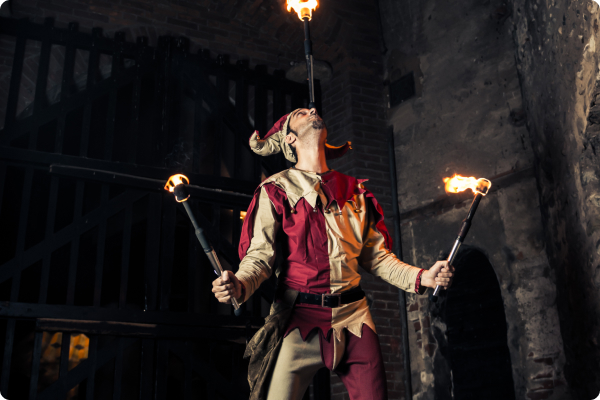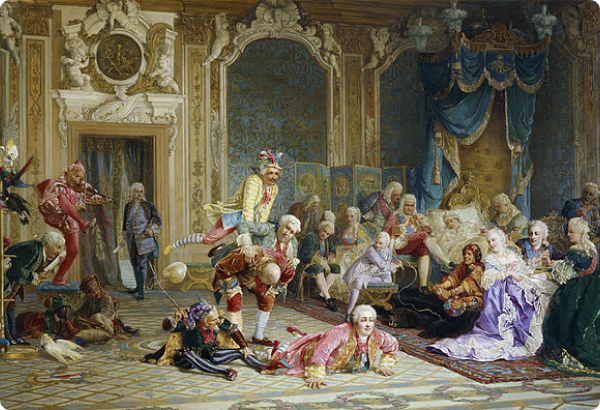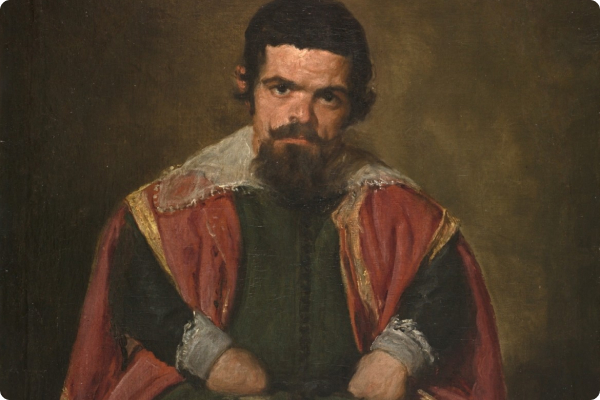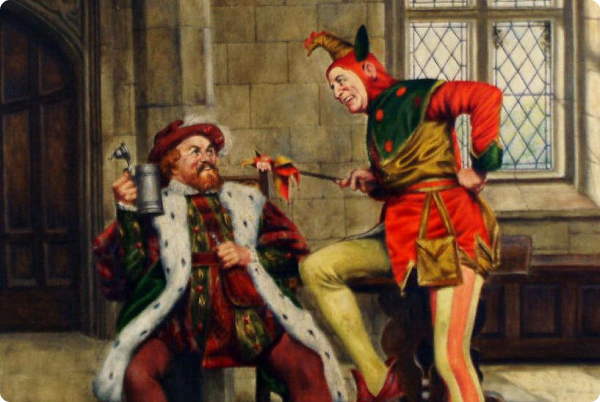Types of Jesters
From the King’s fool to travelling jesters and buffoons, there is more than one type of jester recorded throughout history. Both the Natural Fool and professional jesters have dotted history and their impact is still seen today.

These wandering comics and actors were often also called minstrels, jongleurs, storytellers or troubadours and had a slightly different role to what the traditional image of a jester invokes.
Not all jesters found themselves tied down to court or royal household, some jesters found their purpose in wandering from town to town, performing and often making a meager sum of money or food for their troubles.
These travelling fools didn’t possess the grace or privileges like the Royal court jesters and were definitely a long way from the role of a wise fool.
Similar to the royal jesters, these professional fools were employed by a wealthy or notable figure who used their skills to entertain at parties and events. These Licensed Fools were often quick witted and spoke their minds freely. They would also aim to acquire new skills or acts so their hosts never tired of them.
A personal jester’s costume was also one of their many tools. Many jesters throughout the Middle Ages often wore motley clothing, sometimes with a monk’s cowl, donkey ears, or a scepter. From their colourful attire it can be easy to see where today’s clowns draw their inspiration from.
The official or personal jester was more than just comic actors, however. There are records of them being sent on tasks such as running messages to other households, giving them insight into state affairs and gossip. During times of war, they were also used to send messages to the enemy and even entertain the troops. The role of a licensed fool was not always a safe job to hold, especially when they were the deliverer of bad news.

V.Jacobi | Jesters of empress Anna Ioanovna (1872)

Diego Rodríguez | The Buffoon el Primo (1644)
The Natural Fools often had mental or physical deformities such as a hunchback or dwarf, and these features made fools prized by their patrons. While these Natural Fools also wore the same motley garb as the Licensed Fool, they also were recorded to have worn ordinary clothing that was popular at the time and area they were in.
The Natural Fool also differed in their role when compared to the Licensed Fool. Their role was based more in pure entertainment rather than the social pawn that the Licensed Fool played.
This type of jester is typically what comes to mind when people think of a court jester, a figure who used jokes, juggling, songs, and even tumbling to entertain the courts.
The Royal Court Jester
The royal court jester was a figure employed by the reigning king or queen and was especially popular in the English court. The European jester was hired as entertainment for the nobles of the court and ensured that every party or dinner was a memorable affair.
There are records of both the Natural Fool and Licensed Fool being present in the royal court, though they played very different roles.
While some Medieval jesters were there purely for entertainment, others such as the Licensed Fool, took on a larger role. These fools often influenced their rulers on key decisions and were an important part of state affairs in the royal court. Sometimes the court jester was the only person who could deliver bad news to a monarch and was important in keeping their spirits high.


